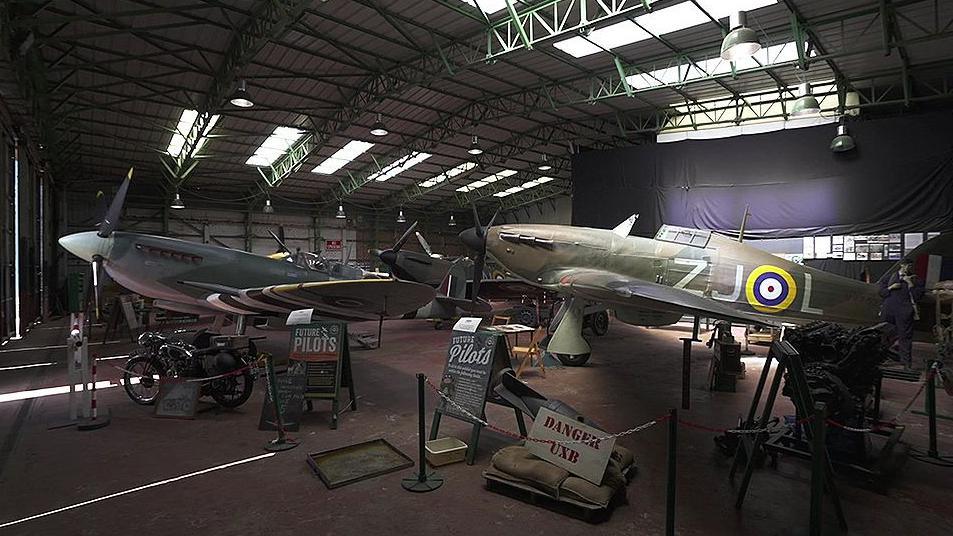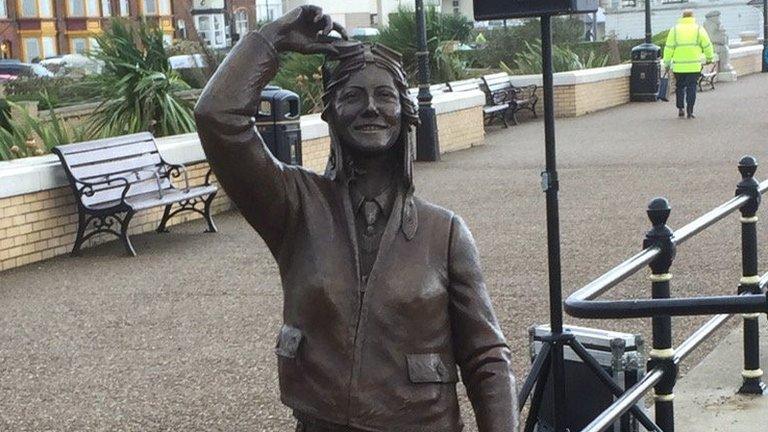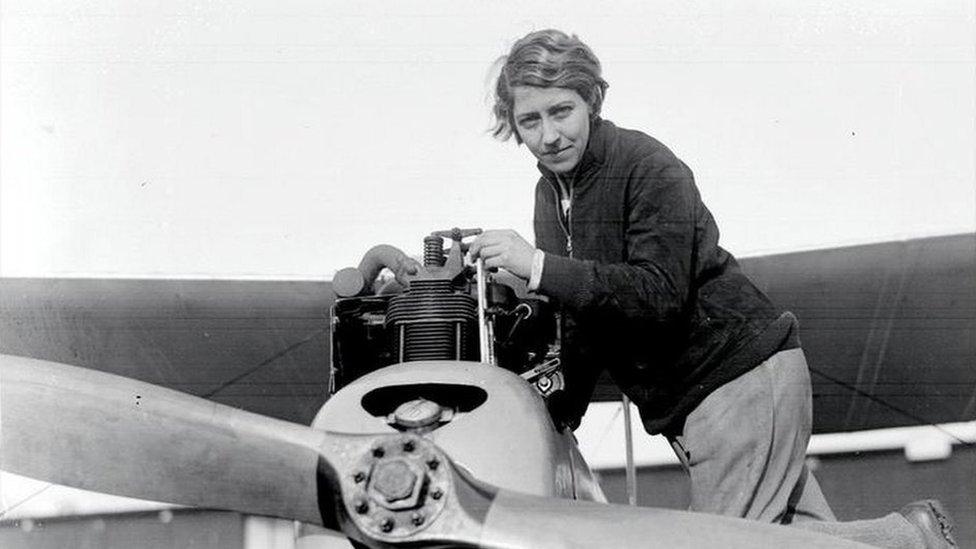Museum's extension plan to tell story of female pilot

Amy Johnson was the first woman to fly solo from England to Australia in 1930
- Published
A museum in a seaside resort is extending to tell the story of pioneering aviator Amy Johnson.
The Spitfire Visitor Centre Hangar 42 at Blackpool Airport said it needed more space to tell the story of the trailblazing pilot, who was the first woman to fly solo from England to Australia in 1930.
Ms Johnson took off from Blackpool Airport in January 1941 to deliver an RAF aircraft to Kidlington airbase in Oxfordshire but her plane ditched in the Thames Estuary four and a half hours after take-off.
Volunteers from the museum are restoring a "very rare" replica of the aircraft she made her last fateful flight in and are fundraising for a new hangar to showcase it.
Volunteers at the Lytham St Annes Spitfire display team are renovating a rare Airspeed Oxford Mk.V EB518 which is identical to the one flown by Ms Johnson, who had links to the Fylde coast.
Her family had an ice packing firm in Fleetwood and she was in Blackpool to visit her sister, who lived in the resort, before embarking on her fateful final flight.

The museum has outgrown its space with the Lytham St Annes Spitfire display team fundraising for a second hangar
Raymon Messih, one of the volunteers working on the Saving Amy project, said: "It is a privilege to have this opportunity because these are very rare these days."
He said it would be an honour to bring people in to the museum and "tell the story of Amy Johnson with the aircraft here to replicate that flight".
Ms Johnson's flight took off in January 1941 from what was then called RAF Squires Gate Airport to Kidlington airbase for the Air Transport Auxiliary.
The flight should have taken 90 minutes but, for reasons unknown, her plane ditched in the Thames Estuary four and a half hours after take-off.
Ms Johnson, who was from Hull, was 100 miles off course and 12 miles off the coast of Herne Bay. Her body was never found.
With the replica aircraft taking shape, the museum has outgrown its space and the Lytham St Annes spitfire display team are fundraising for a second hangar.
Volunteer Maurice Saunders, who looks after building premises and facilities, said: "We can't physically fit everything in the hangar at the moment."
He said a new hangar will mean it can "exhibit everything properly" and it will be a better visitor experience, too.
Listen to the best of BBC Radio Lancashire on Sounds and follow BBC Lancashire on Facebook, external, X, external and Instagram, external. You can also send story ideas to northwest.newsonline@bbc.co.uk, external
Related topics
- Published25 August 2021

- Published11 April 2012
- Published21 June 2013
- Published17 September 2016

- Published5 January 2016
